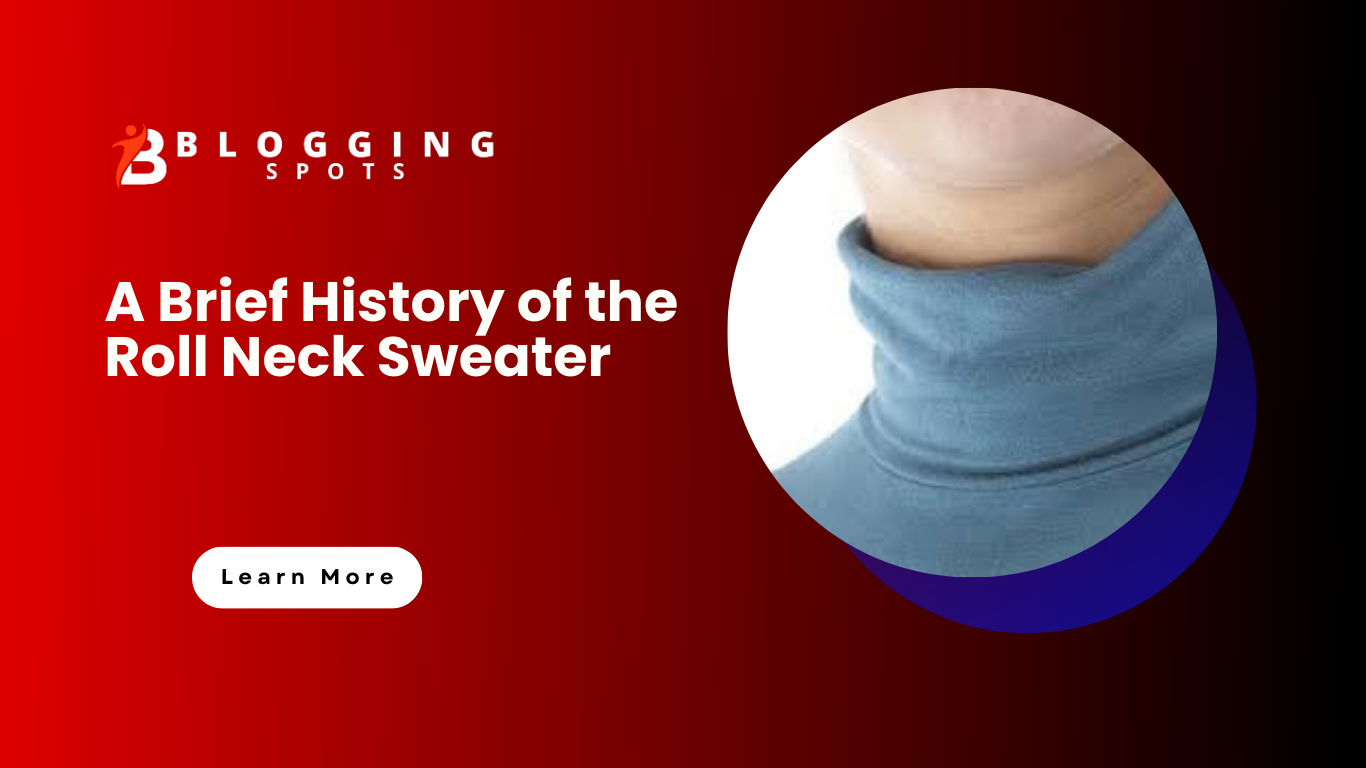Friends are coming over, couch and Netflix set up, room nice and cozy. Wear Roll Neck Sweater. Casual but not too. Elegant and sophisticated. Roll neck sweaters, often known as turtlenecks or polo necks, can be worn officially or casually. Meanwhile, absolute comfort.
Despite its simplicity, the roll neck sweater has a rich history. Although it looks like another clothing, it has an exciting history. Fashion has embraced the roll neck sweater, which began as a practical clothing for fishermen and sailors and became a rebellious and feminist statement.
It’s still worn for its utility, so it’s no wonder that it’s a wardrobe staple. We’re tracing the history of one classic garment:
- 5th-19th century: utilitarian original
- 1920s: fashion breakthrough
- 1950s-1960s: iconic and rebellious – 1970s-present: continuing appeal.
5th-19th Century: Utilitarian
Many statement pieces today are functional, like the roll neck sweater. Knights wore it in medieval Europe to prevent armour-related sores. Laborers, athletes, the Navy, fisherman, and sailors used roll neck sweaters in the early 19th century.
Its high neck provided insulation, warmth, and protection from harsh marine weather, making it essential for cold-season workers. Around 1860, they were famous in sports. The term “polo neck” gained popular when polo players wore them.
1920s: Fashion Triumph
The First World War saw many people using the garment for its protection from severe conditions. It changed after the war. It started as a simple everyday garment before becoming more refined. This is when the roll neck became a statement garment to reject formal clothing.
Noël Coward is credited with popularizing the sweater to the masses. He donned a colorful high-neck jumper instead of a shirt and tie one evening in 1924, according to a prominent newspaper. But Coward blithely admitted he liked the clothing “more for comfort than for effect”.
1940–1970: Iconic & Rebellious
These 30 years saw the roll neck sweater become legendary
This is when it started to shape the garment we see today. Associated with beatniks and artists, it symbolized defiance and intellectualism. Beatniks, who rejected social standards, popularized the sweater. It defied fashion rules and appealed to individuals wanting a unique and refined style. Audrey Hepburn and Steve McQueen’s on-screen presence and flair helped cement its place in popular culture. Academics, actors, philosophers, artists, and musicians wore roll necks. Kind of rebellious to wear.
Roll neck sweaters were feminine and sensual on the other hand. Skin-tight, cropped, and sleek versions of the garment were created. The seductive look is famous because to celebrities like Jayne Mansfield.
The clothing became associated with the anti-mainstream, and by the 1970s it gave the intellectual and independent feminist style worn by activists throughout the burgeoning political movement. Dorothy Pitman Hughes, Gloria Steinem, Angela Davis, and other Black Panthers wore roll necks.
1980s-Present: Still Popular
Despite its prominence, the roll neck sweater fell out of favor in the 80s and early 90s, signifying humility and being uninteresting.
Not for long! Its noble rebirth began in the mid-1990s, unaffected by Steve Jobs’ iconic black roll-neck (really a daily uniform) by Issey Miyake.
Numerous celebrities have worn the roll-neck for its cutting-edge, deliberate cool since then. This stylish sweater returns on the red carpet.
Looking Back
Despite its ups and downs, the roll-neck has been a popular garment for centuries. With that historical evidence, we may conclude that this flexible and comfortable garment is timeless, not trendy. The roll neck sweater is a modern wardrobe staple, whether useful or attractive. As always, it looks classy and stylish.
Roll Neck Sweater @ SANVT
After learning about roll neck sweaters’ history, we may enjoy them even more and perceive them in a new light! Roll neck sweaters symbolize more than simply clothing. Sailors, athletes, actors, philosophers, feminists, activists. Many people have worn this clothing for various reasons.
SANVT has created a comfortable, classic roll neck. Since we care about sustainability and ethics, we produced our roll neck using 100% recycled materials instead of wool. That means we achieved excellent softness, warmth, and breathability without damaging nature or humans.
SANVT Roll-Neck Sweater
- Made of wool (30%), viscose (30%), polyamide (35%), cashmere (5%).
- 100% GRS-certified recycled materials
- Handmade in Portugal
- Timeless and durable
Read Also: Arcangel height and age, biography, career and net worth
Conclusion
The roll neck sweater, with its timeless appeal and versatile functionality, has a fascinating history that transcends mere fashion. Originating as a practical garment for knights and laborers, it evolved through the centuries to become a symbol of rebellion, intellectualism, and feminist strength. From its utilitarian beginnings in the 5th century to its fashion breakthrough in the 1920s, iconic status in the mid-20th century, and enduring popularity today, the roll neck sweater has been embraced by diverse groups, including beatniks, artists, celebrities, and activists.
Its resurgence in the 1990s, thanks to figures like Steve Jobs, and continued presence on red carpets, underscores its enduring allure. The roll neck sweater is more than just a piece of clothing; it is a statement of elegance, comfort, and individuality. Whether worn casually or formally, it remains a beloved wardrobe staple that seamlessly combines style and substance.
At SANVT, we honor this rich heritage by crafting roll neck sweaters that are both sustainable and luxurious. Our commitment to using 100% recycled materials ensures that you can enjoy the exceptional softness, warmth, and durability of our roll neck sweaters without compromising on ethics or the environment. Embrace the legacy of the roll neck sweater with SANVT, and experience the perfect blend of tradition and modernity.






Leave a Reply